
All About African Greys!

African Greys
Two species of African Grey Parrots, obviously native to Africa, are
commonly found in captivity: the Congo with a bright red tail and the
Timneh with duller coloration. Most free-ranging species are considered threatened or endangered and efforts to protect these birds have resulted in a ban on importation for pet purposes in the United States. High quality companion birds are available from breeders. Research has shown that African Greys are capable of actual reasoning and verbal communication (beyond just mimicking). Some researchers even believe African Greys have show intelligence levels equal to a 13-year-old human. There is some speculation that males imprinted on humans may have difficulty in relating to a female bird; exposure to parent birds during rearing may reduce this tendency. Once initiated, African Greys are prolific breeders and the offspring are easy to hand-raise.
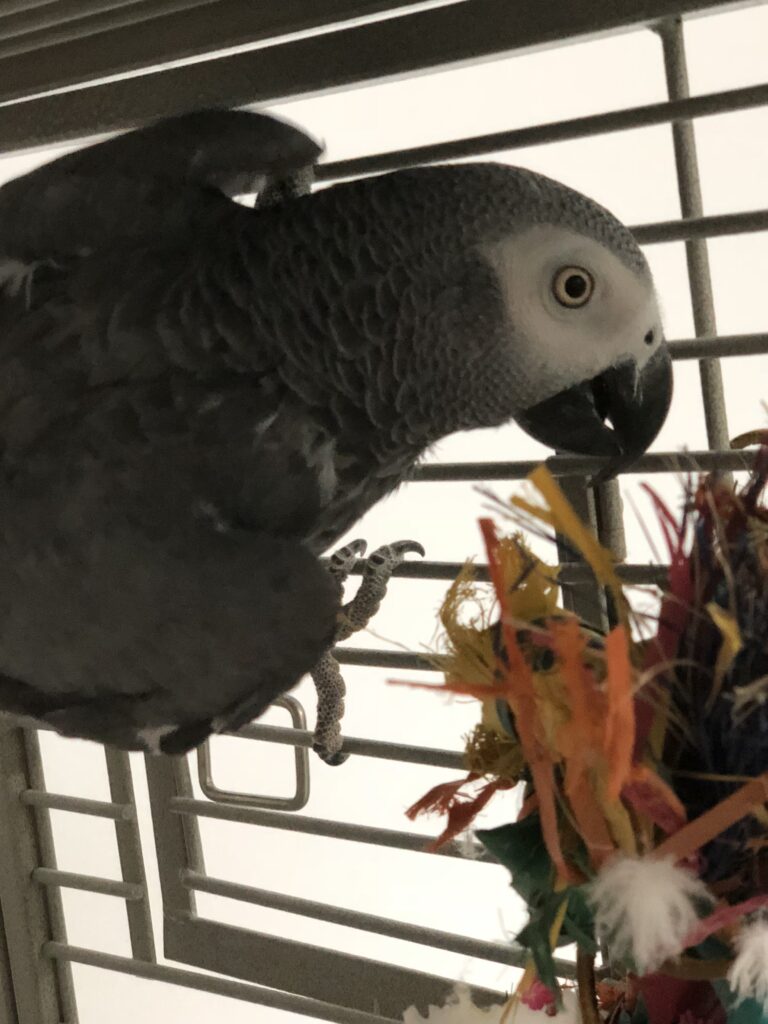

What to Expect from Your African Grey
African Grey Parrots are extremely intelligent, alert and can be high-strung. It is best to acquire these birds at a young age, because older poorly integrated individuals can have objectionable personalities and vocalizations that are very difficult to eliminate. Some aviculturists are initiating selective breeding for calmness. There is a tendency for African Greys to form a bond with an individual family member and become aggressive toward others, especially during the breeding season. This is mostly true in birds on a seed, nut, sweet vegetable and fruit diet. African Grey Parrots are considered to be one of the five top companion bird species for potential mimicking. This mimicking ability can include sounds like dripping water, flushing toilets, squeaky doors, coughs or sneezes of family members, and answering machines. They can carry on short meaningful communication.
What Do Greys Do All Day?
Because of their high intelligence, African Greys are easily bored and require training. They are relatively playful and can be amused with some toys. Because they love to chew, any toys must be free of toxic metals, hooks, sharp objects or small, easily consumed components. Providing chew toys or fresh-cut branches from nontoxic, pesticide free trees is encouraged for African Greys. Check with your veterinarian for recommendations on locally available safe trees.
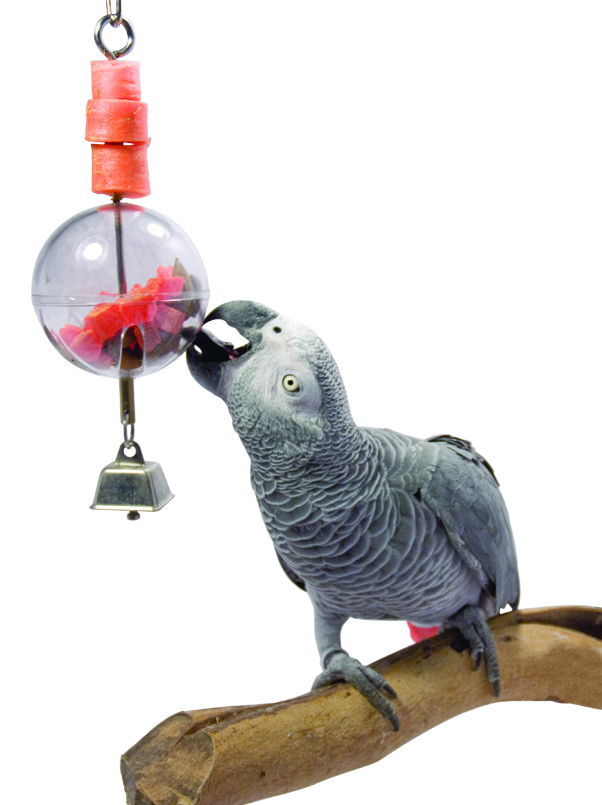
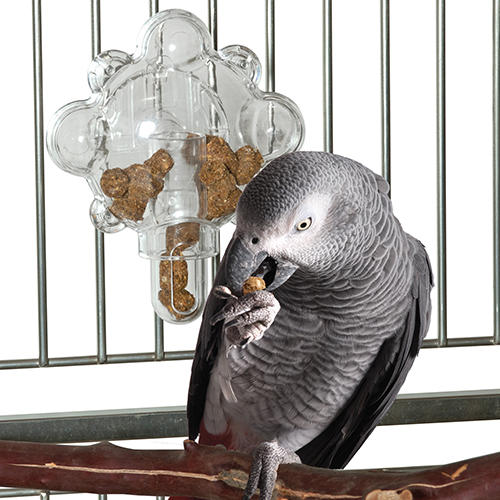
Is Your African Grey a Male or a Female?
In most African Greys, it is difficult to distinguish a male from a female based on physical characteristics; therefore, endoscopy or laboratory methods must be used for sex determination in breeding facilities. There may be some size or color variation between genders if the birds are from the same subspecies.
What Your Vet Looks For in a Healthy Grey
Dry, Open Nares
Smooth Beak
Clear, Bright Eyes (No Discharge)
Alert, Erect Posture
Smooth, Bright Feathers Without Color Breaks, Transparency or Ragged
Edges
Body Free of Lumps and Bumps
Even, Reptilian Pattern on the Feet and Nails of Appropriate Length


Are African Greys Tame?
Young, hand-raised African Greys adapt readily to new surroundings and handling procedures. They should be exposed early in life to novel situations (car travel, hospital visits, multiple visitors in the household, other household pets) so that they are well adjusted to these events. Adult birds are less inclined to accept environmental changes and may feather pick. Patience, discipline, leadership, hooding (covering the head), a sense of ritual and the offering of rewards may be necessary to modify the behavior of adult African Greys. Even then, they are not completely trustworthy and may bite for no apparent reason.
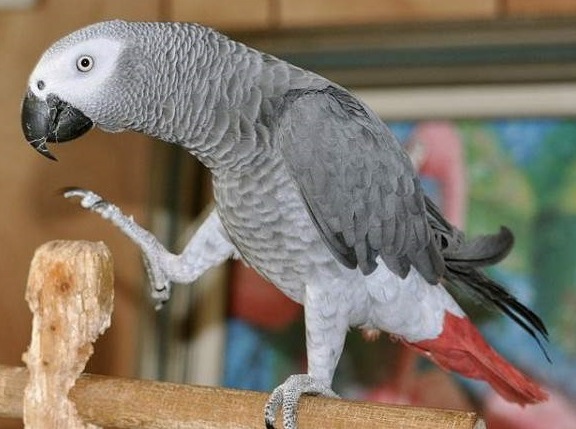
How to Identify Your Bird
Two methods used to permanently mark companion birds for identification purposes are tattoos and microchips (both are injected under the skin). Individually number leg bands are not reliable for identification. Every bird has a unique scale pattern on the feet. Photographs of the feet (updated periodically as the bird ages) can be maintained in the bird’s record to confirm its identity and to prevent fraud that can occur with other techniques.
Housing for your Grey should:
be as large as possible. be clean, secure, safe and easy to service. be constructed of durable, nontoxic material (avoid zinc). contain variablesized perches made of clean, nontoxic, pesticide-free tree branches. have food and water containers placed at opposite ends of the enclosure. avoid having perches located directly over food containers. contain toys and accessories that are moved around occasionally to prevent boredom and aggression. offer occasional opportunity.
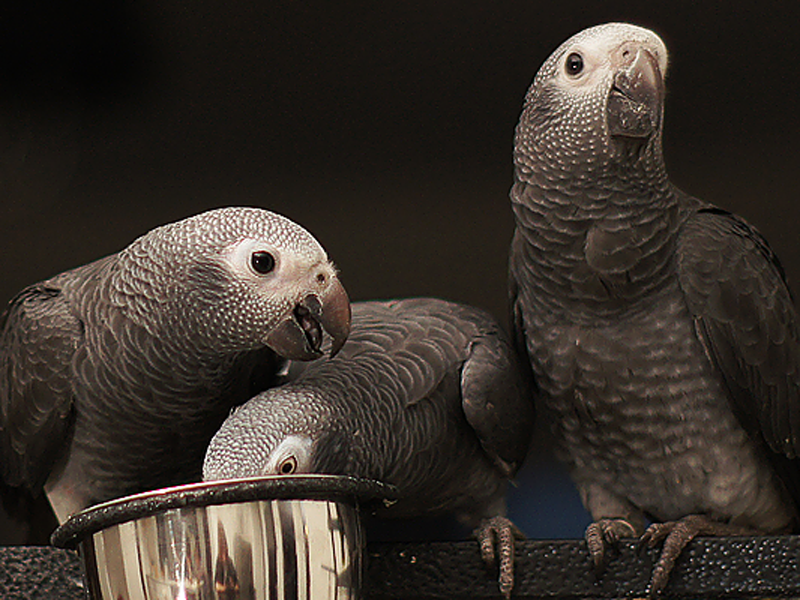
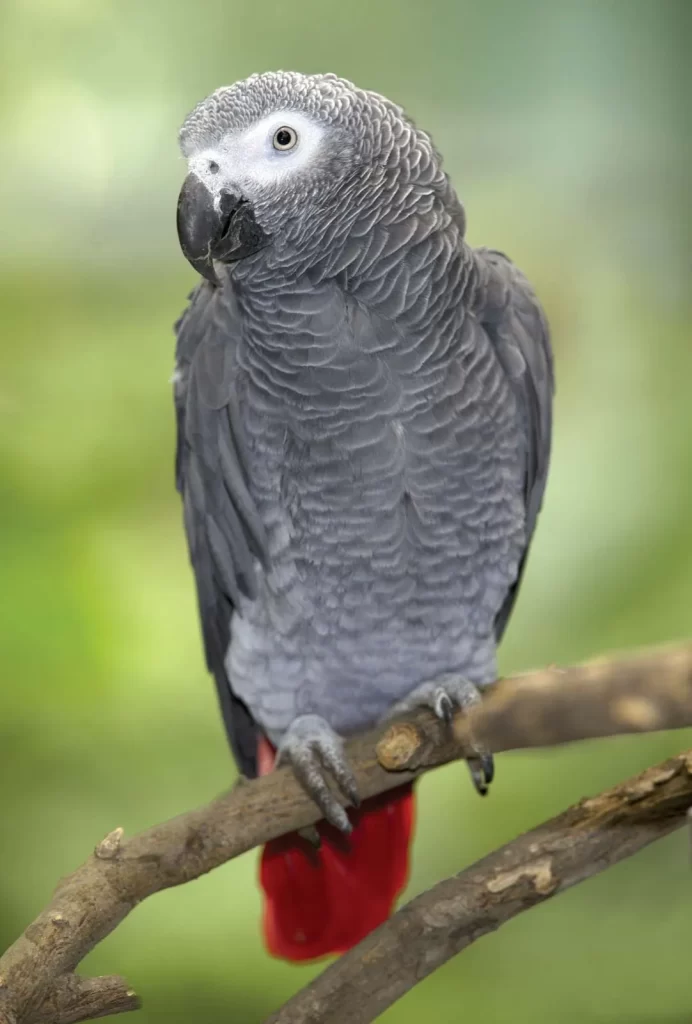
African Greys are very curious and will investigate anything new in their environment. That is why it is important to prevent their access to:
ceiling fans, hot cooking oil, Teflon-coated items (overheated), leg chains, sandpaper-covered perches, tobacco and cigarette smoke, chocolate, avocado, salt, alcohol, toxic houseplants, pesticides, toxic fumes, easily dismantled toys, dogs, cats, and young children, cedar, redwood and pressure-treated wood shavings, sources of lead or zinc.
Most Common Problems with African Greys
Behavior problems.
Biting, screaming and Feather picking
Respiratory diseases
Bacterial, viral and fungal infections
Calcium deficiency syndrome
Neuropathic gastric dilatation
Vitamin A (beta carotene) deficiency
Toxicities
Chlamydia
Tumors
Psittacine beak and feather disease virus
Many common disease conditions in African Grey Parrots are the result of malnutrition. Visiting your avian veterinarian for routine health checks will help prevent many of the above diseases and support you in having a long, satisfying relationship with your African Grey Parrot.

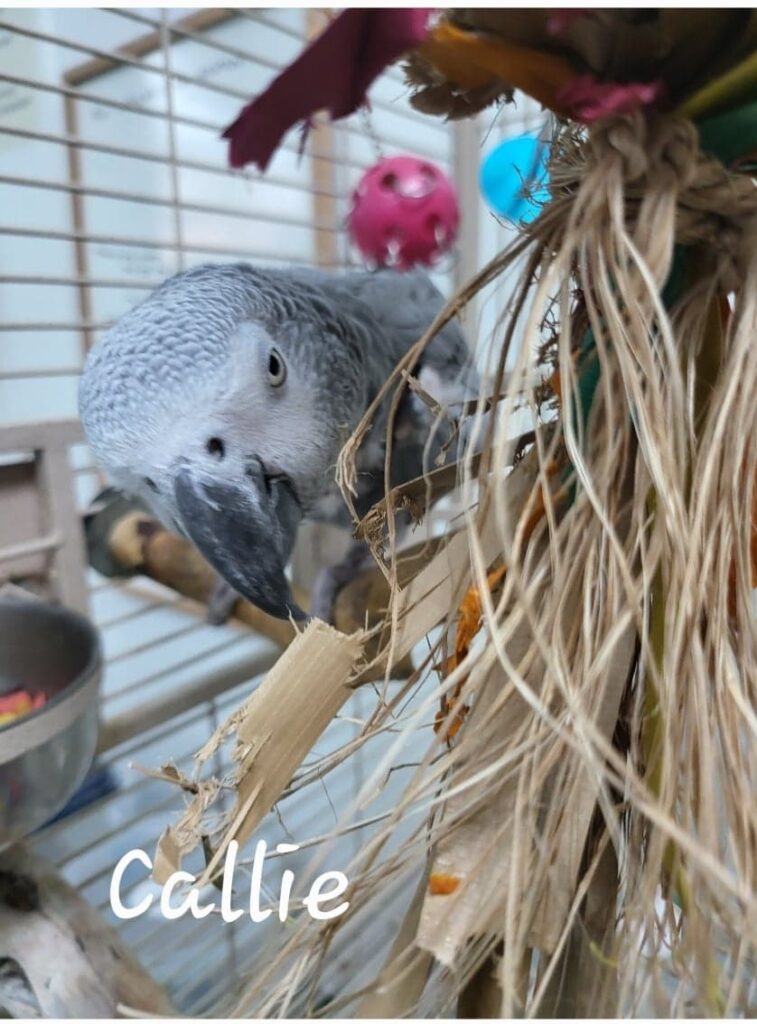
How to Keep Your Grey Healthy, Happy and Safe!
Give lots of structured leadership training while young. Feed a fresh, high quality, toxin-free formulated diet, such as Harrison’s High Potency Course Grind formula with daily supplementation of chopped vegetables and fruit according to the instructions on the back of the bag. Grit is probably not necessary with modern captive diets. Provide clean, fresh, uncontaminated water (try using water bottles). Remove and replace food and water containers twice daily. Provide occasional opportunity for bath, shower, or misting (at least weekly). Weekly exposure to sun that has not passed through glass and is not too intense is ideal. A minimum of fifteen minutes is recommended. Avoid spraying house with insecticides.
[save_as_pdf_pdfcrowd]

